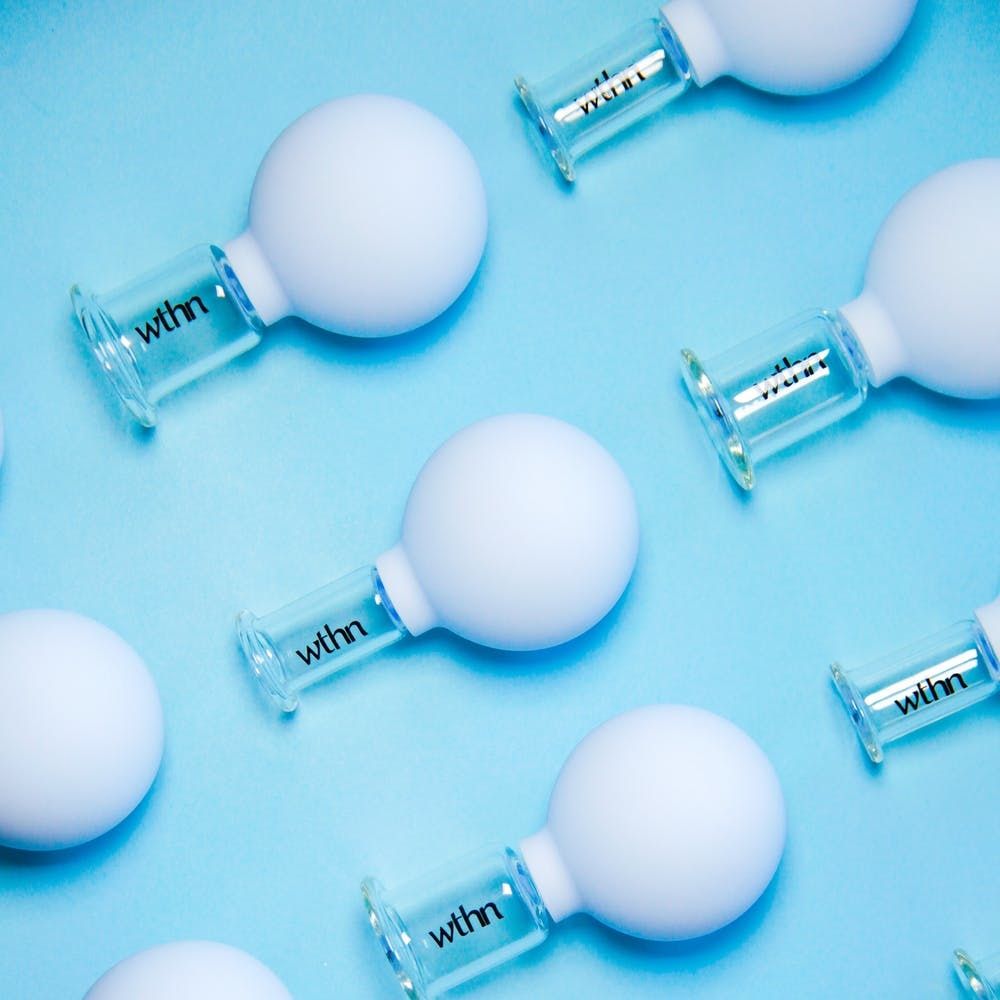It’s no secret that we love a good DIY beauty project; homemade pumpkin face masks satisfy our craving for PSLs all-year long, and gooey glitter shower jellies are a go-to for girls’ night. But are holistic beauty procedures like cupping safe to do by yourself, or is it something you should leave to a professional? To find out, we spoke with three acupuncturists to learn the pros and cons of DIY cupping.
WHAT IS CUPPING?
Cupping first gained mass attention at the 2016 Rio Olympics thanks to the large, bruise-like spots spotted on swimmer Michael Phelps. Traditionally used to rehab sore, overworked muscles, it’s now being looked at through a cosmetic lens, offering solutions for cellulite, crow’s-feet, fine lines, and sagging skin on your face, neck, and chest. “Cupping is an ancient healing modality where suction cups are placed on specific areas of the body,” explains Shari Auth, a National Certification Commission for Acupuncture and Oriental Medicine (NCCAOM)-certified doctor of acupuncture and co-founder of NYC-based acupuncture studio WTHN. “The suction creates negative pressure on the body that increases circulation and stretches the muscles, which promotes the detoxification of the body and helps to reduce muscle pain and tension.” As its popularitycontinues to grow, clinics are offering at-home kits so you can fit your cupping treatment in anytime, anywhere. (Photo via Ullstein Bild/Getty Images)
IS At-Home Cupping SAFE?
Once upon a time, glass cups and a flame were essential to this procedure. “Because of breakage and fire hazards, a lot of practitioners today use plastic cups and a suction gun,” Auth says. Materials like silicone and plastic are now becoming more common, ensuring a safer treatment. However, even though silicone is solving the fire hazard dangers associated with cupping, there are other safety issues you should be concerned about. (Photo via Alina555/Getty Images)
Surface abrasions, AKA the marks left behind after a session, can go awry if you aren’t careful. “This reddening of the skin is the result of pulling the skin away from the skeleton,” says Stephanie Tyiska, a Philadelphia-based practitioner who is NCCAOM-certified in acupuncture and Chinese herbal medicine. When done correctly (read: gently), this allows room for the circulation of fluid and blood, which leads to better nerve function. Done incorrectly, however, at-home cupping can cause negative reactions and side effects. “Burning, bruising, blistering, nerve damage, ruptured blood vessels, and exacerbation of current skin issues, among others, are all risks to be considered when using cupping therapy,” warns Michelle Andrews, owner of Portland’s Cupping Studio.
While we’re here for a non-invasive procedure we can do on our own, cupping is technically a medical procedure. And even though kits like these make it more manageable to practice at home, if you feel any uncertainty, consider seeing a professional instead.
IS At-Home cupping AS EFFECTIVE?
Silicone cups are one of the most common components in at-home kits, but they don’t always measure up to the results of their glass cousins used by professionals. Silicone cups are the best choice for beginners, but that they won’t necessarily give you the same level of suction you’d get in an in-office appointment, says Andrews. (Photo via WTHN)
To determine just how much suction you need to DIY, most practitioners recommend going to a professional for your first time. “It’s always best to spend the money and have a treatment with a specialist first so you’ve experienced the processes and results on your skin,” advises Tyiska. It will introduce you to the practice, and if you are a visual learner, it’s helpful to see the method being performed correctly toinform at-home attempts.
Would you try at-home cupping? Tweet us at @BritandCo and let us know!
